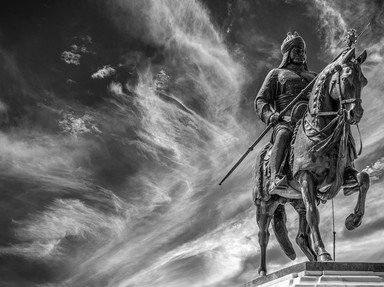Quiz Answer Key and Fun Facts
1. In 149 BCE., on the pretext that Carthage had broken a treaty with Rome, the Romans laid siege to the city, starting the Third Punic War. How long did the Carthaginians hold out?
2. The Crusades, an attempt by soldiers from Western Europe to retake the Holy Land from the Muslims, began in earnest in the late summer of 1096 CE. When did the Crusaders finally reach Jerusalem?
3. One of the darkest chapters in human history has to be the Trans-Atlantic African slave trade, which flourished from the 16th into the 19th centuries. According to historians, how many Africans were captured and brought to the Americas in this time period?
4. After several border incidents, Japan invaded China in July 1937. Japanese forces reached the Nationalist Chinese capital in December, and the city fell on the 13th. What was the name of this city?
5. One of the largest and most powerful empires in the Americas, the Aztec civilization was centered in what is now Mexico. In 1519, a Spanish force landed and within two years had destroyed the Empire. Who led this expedition?
6. A great center of learning in the ancient world, the Great Library of Alexandria, Egypt was founded around 280 BCE and was reputed to have some 400,000 scrolls at its height circa 150 BCE. After several periods of decline, the library was destroyed in 642 CE. What group was responsible for the destruction?
7. When Europeans "discovered" the New World in the late 15th century, the native population of North America (excluding Mexico and Central America) has been estimated at some 10-20 million people or more. By 1890, it was estimated that less than 2 million native inhabitants were left. What was the single most destructive factor for these nations?
8. In 1994 Africa, the outbreak of civil war in this small country led to an organized killing spree in which some 500,000 to 800,000 people lost their lives. Which unfortunate state was this?
9. On April 13, 1919, an incident occurred in British-ruled India that demonstrated how cruel a government could be to its own citizens when they refused to obey what they considered to be unjust laws. Can you name the incident?
10. A horribly dark chapter in world history has to be the Holocaust, wherein the Nazi government of Germany killed off large numbers of Jews, Gypsies, the handicapped, and other people deemed as "undesirables". How many people are estimated to have been killed by the Nazis between 1933-1945?
Source: Author
Reamar42
This quiz was reviewed by FunTrivia editor
ponycargirl before going online.
Any errors found in FunTrivia content are routinely corrected through our feedback system.
